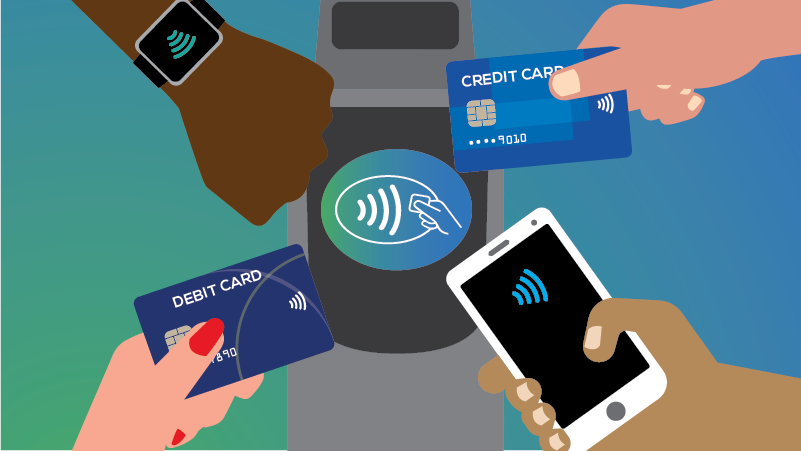Not only has the shopping process itself changed during the pandemic, but also the way of payment. Contactless payments have been on the rise for a few years, but since the outbreak of COVID-19 contactless payments have grown twice as fast as non-contactless payments. As the Executive VP of Mastercard states; ‘Social distancing does not just concern people’s interations with each other; it includes contact with publicly shared devices like point of sale terminals and checkout counters’. The two most important drivers for this change are safety and cleanliness, which are clearly even more important than ever. During the first quarter of 2020, during the outbreak of COVID-19, Mastercard reported a 40% growth in contactless payments, because of the fear of transferring COVID-19 through cash or touching devices. Also three quarters of consumers make at least one contactless payment a week during the pandemic and the prediction is that this will not change even after the pandemic is over, with 74% of the respondents saying that they will keep using contactless payments.
Clearly most people now know how contactless payment works, but what technologies are behind this innovation? These technologies are radio frequency identification (RFID) and near-field communication (NFC), which use transponders and radio waves to enable communication between devices and systems. The RFID technology is used between a powered reader and an unpowered tag, while the NFC technology is used between two powered devices, for instance when a payment is done by holding your smartphone against a payment terminal. Currently Google Pay, Apple Pay and Samsung Pay are big players in the contactless payment industry.
A few benefits of contactless payment, such as safety and cleanliness, have already shortly been discussed, however these are not the only benefits. Convenience is also one of the key factors driving the growth of contactless payment as it speeds up the checkout process, which is an advantage for both the customer as the business. Also less mistakes are made, as contactless payment is mostly an automated process, so it is less likelly for human errors to be made. Governements of various countries have recognised these benefits and raised the limit for contactless payment since COVID-19 which boosted growth even more.
Sources:
https://www.mastercard.com/news/press/press-releases/2020/april/mastercard-study-shows-consumers-globally-make-the-move-to-contactless-payments-for-everyday-purchases-seeking-touch-free-payment-experiences/
https://www.forbes.com/sites/forbestechcouncil/2020/10/21/contactless-payment-solutions-why-and-how-to-adopt-them-in-a-post-covid-19-economy/?sh=32b3f3b24fbf
https://www.cnbc.com/2020/04/29/mastercard-sees-40percent-jump-in-contactless-payments-due-to-coronavirus.html
How contactless payments are driving digital payment services in times of COVID-19


Hi Lynn,
Thanks for your contribution on this interesting topic. I do believe that contactless payments will become the standard one day. Indeed, the NFC-technology is often used in the form of mobile phones (and smart watches). Nowadays you see a lot of innovative payment gadgets such as rings, keychains, and wristbands. Who knows, maybe we’ll be in the of world of facial recognition payment which already exists in China, Los Angeles, Denmark, and Nigeria.
Digital payment is simple, safe, and free of charge. Banks play an important role in fighting financial crime, such as fraud and money laundering. Paying a few euros for cash withdrawals does not stop criminals which banks know that. Discouraging cash makes its use more noticeable. It’s easier to analyze patterns when only, for example, 10 percent of customers are actively using cash than when almost everyone else is. The services provided by banks have been focused on digitization of payment systems for years. Banks have roughly decreased the number of ATMs in the past six years.
They do this, so to speak, to prevent thieves, but of course banks also save costs. Banks invest a lot in systems to monitor payment transactions, but they mainly focus on fighting crime. Unfortunately, they do not warn the customer about suspicious transactions. Banks want to disrupt payment traffic as little as possible and not to alert criminals. A bit controversial, isn’t it?